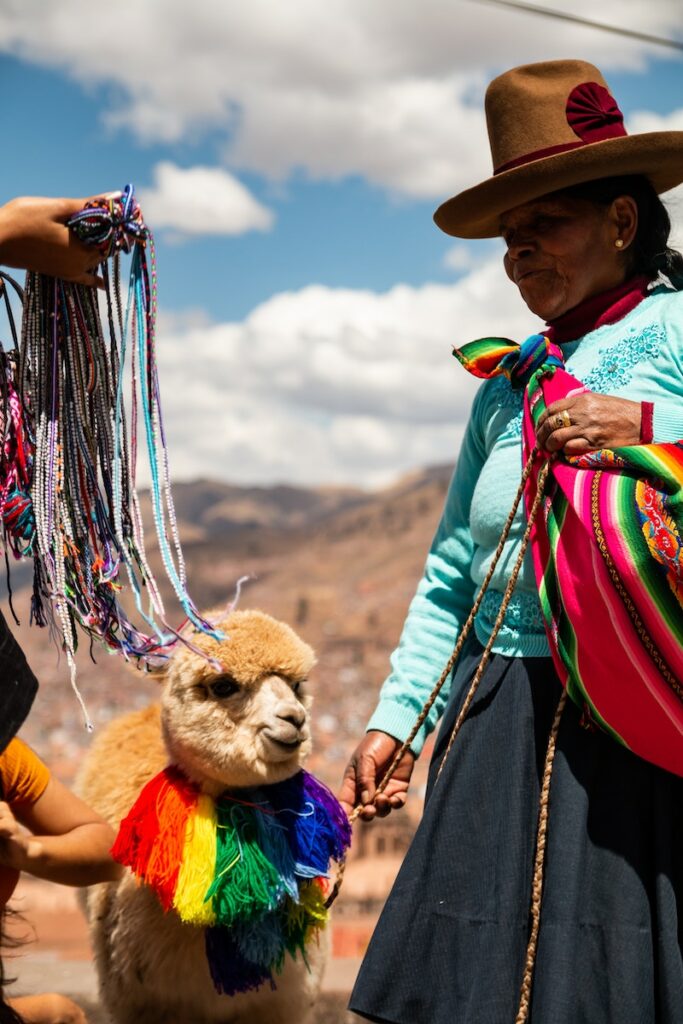Disclaimer: This post contains affiliate links. At no cost to you, I might earn a small commission if you make a purchase through the links in this article.
Cusco altitude affects everyone differently. Whether you are used to high elevation or live at sea level, it’s important to prepare ahead of your visit.
This colonial town in the heart of the Andes is the most popular destination in Peru. It’s a gateway to Machu Picchu and some of the most stunning hikes in South America like the Inca Trail, Rainbow Mountain, and Salkantay Trek.
Cusco is also the former capital of the Inca Empire and boasts a fascinating history. You can explore well-preserved Inca ruins, and colonial architecture, and learn about Inca and Spanish culture in Cusco’s museums and historic landmarks.
I never experienced altitude sickness in Cusco, but it’s not the case for everybody. Some travelers who come to Cusco have typical altitude sickness like headache, poor sleep, and dizziness. But don’t worry, I got you! In this article, I will tell you how you can prepare for your trip to Cusco and have a fun and safe trip.
Cusco elevation
Cusco sits at an elevation of approximately 3,400 meters (11,200 feet) above sea level, which can lead to a reduced oxygen supply, resulting in altitude-related symptoms for some visitors.
What is altitude sickness?
Altitude sickness, also known as acute mountain sickness (AMS), is a condition that can occur when a person rapidly ascends to high altitudes, typically above 8,000 feet (2,500 meters) above sea level.
Although I can’t speak of what altitude sickness is like in Cusco, it’s a concern for many travelers who come to this popular town. As a rule of thumb, make sure you feel OK in Cusco, before attempting any strenuous hikes in the Andes.
✅ GET A TRAVEL INSURANCE FOR YOUR TRIP TO PERU
Symptoms of altitude sickness in Cusco or other high-altitude areas can include:
- Headache – A persistent headache is one of the most common symptoms of altitude sickness
- Dizziness – Some travelers may feel lightheaded or dizzy at higher altitudes.
- Shortness of breath – Difficulty breathing, especially with exertion, is a common sign of altitude sickness.
- Loss of appetite – You may lose your appetite and have difficulty eating while adjusting to high altitude in Cusco
- Rapid pulse – Your heart rate may increase at higher altitudes.
- Swollen hands and fingers – Swelling, in the hands, feet, and face can occur in more severe cases.
Remember that symptoms of altitude sickness can vary from person to person and may range from mild to severe. In severe cases, altitude sickness can progress to more dangerous conditions, such as high-altitude pulmonary edema (HAPE) or high-altitude cerebral edema (HACE), which are life-threatening and require immediate medical attention.
Whether you are spending a few days in Cusco, or hiking in the Andes, pay close attention to how your body reacts to altitude changes.
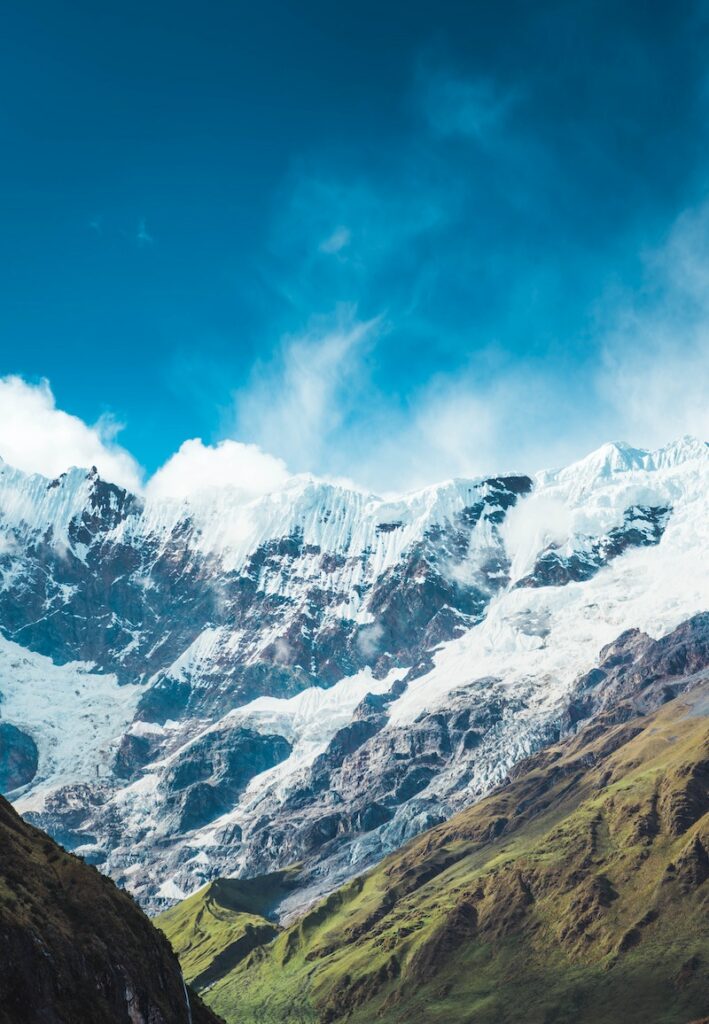
What to do if you experience altitude sickness in Cusco?
If you are starting to experience symptoms of altitude sickness, you should stop your hike or any other physical activity, drink some water, and take a break. Wait until the symptoms subside, and continue at a slower pace only if you start feeling better.
If your symptoms remain the same or get worse, descend to lower altitude as soon as you can, or get medical help, if it’s readily available. Do not push forward if your altitude sickness symptoms don’t go away.
How to avoid altitude sickness in Cusco?
To reduce the risk of altitude sickness, you should take time to acclimatize in Cusco, stay hydrated, and avoid rapid ascents. If you or someone you are with experiences severe symptoms of altitude sickness, descend to a lower altitude as quickly as possible and seek medical attention if the symptoms do not improve.
To reduce the risk of altitude sickness in Cusco, follow these tips:
➡️ Acclimatize gradually
Spend a day or two in Cusco before attempting challenging hikes like Rainbow Mountain or the Salkantay track. I made a rookie mistake on my first visit to Cusco when I booked a tour of Rainbow Mountain the next morning after I landed and ended up with a terrible headache after finishing the hike.
➡️ Stay hydrated
Drink plenty of water to prevent dehydration, which can worsen altitude sickness.
➡️ Try cocoa leaves
Cocoa leaves are common in Peru and are often used to fight altitude sickness. While using cocoa leaves for healing purposes is perfectly legal in Peru, many countries like the United States consider them illegal, so if you buy any, use all of it before leaving the country.
➡️ Avoid alcohol and heavy meals
Alcohol and greasy meals can exacerbate altitude-related symptoms. After you arrive, eat a lean diet rich in nutrients and healthy proteins.
➡️ Rest and take it easy
Allow your body time to acclimate by avoiding strenuous activities in the first few days at high altitudes.
➡️ Talk to your doctor
Consult with a healthcare professional about medication options for altitude sickness prevention before your visit.
If you experience severe symptoms of altitude sickness while in Cusco, it’s essential to descend to a lower altitude as quickly as possible. If your symptoms do not improve or worsen, seek medical attention. Taking precautions and paying attention to your body’s signals can help ensure a safe and enjoyable visit to high-altitude destinations like Cusco.
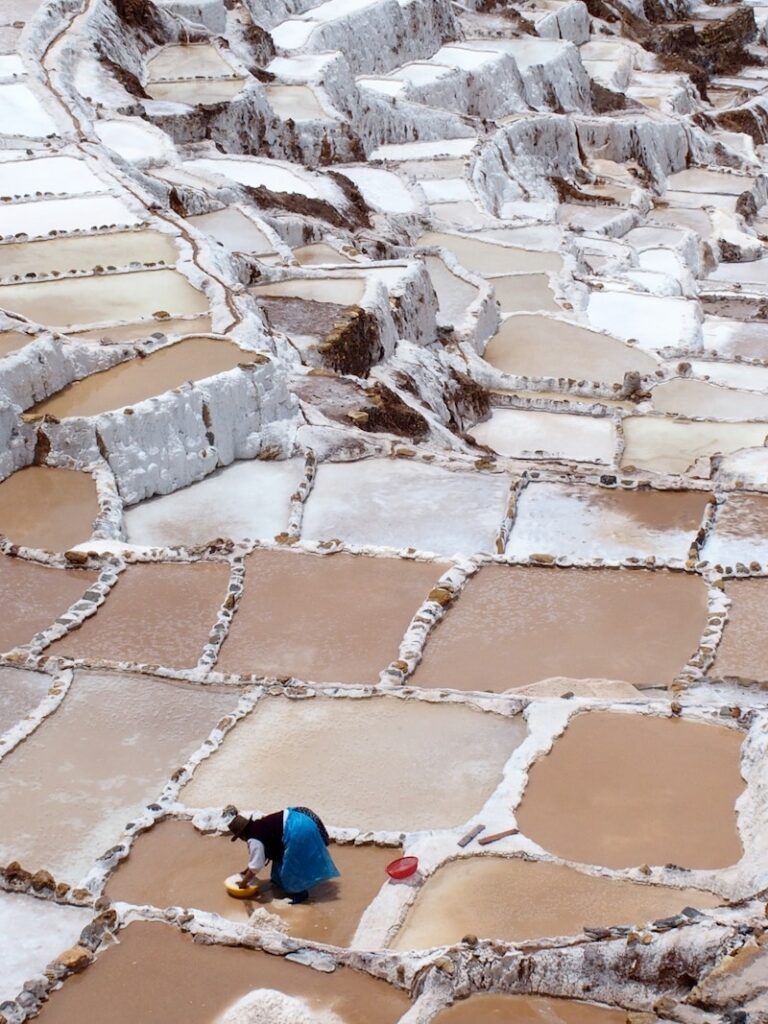
Visit Sacred Valley to get used to the altitude
The Sacred Valley of the Incas, also known as the Urubamba Valley, is located in the Andes Mountains in Peru. The valley is at a lower altitude than some of the surrounding high-altitude areas, like Cusco, which is at around 3,400 meters (11,200 feet) above sea level.
Sacred Valley Altitude
The elevation of the Sacred Valley can vary slightly depending on where you are within the valley, but it generally ranges from approximately 2,800 meters (9,186 feet) to 3,000 meters (9,843 feet) above sea level.
Best tours of Sacred Valley
Why you should take a day trip to Sacred Valley
The Sacred Valley is a popular day trip from Cisco since it is the gateway to various Inca ruins and attractions, including Pisac, Ollantaytambo, and Chinchero. The lower altitude of the valley makes it a good place for travelers to acclimatize to the higher elevations of places like Cusco or while preparing for treks like the Inca Trail or the Salkantay Trek, which often start at higher altitudes.
What is Sacred Valley known for?
The Sacred Valley of the Incas, also known as the Urubamba Valley, was a heartland of the Inca Empire, and it is dotted with archaeological sites and ruins that provide insights into the Inca civilization.
Popular stops in Sacred Valley are Ollantaytambo, Pisac, Chinchero, and Moray, the incredible salt mines, that have become one of the most photographed spots near Cusco.
Here are the top reasons to visit Sacred Valley
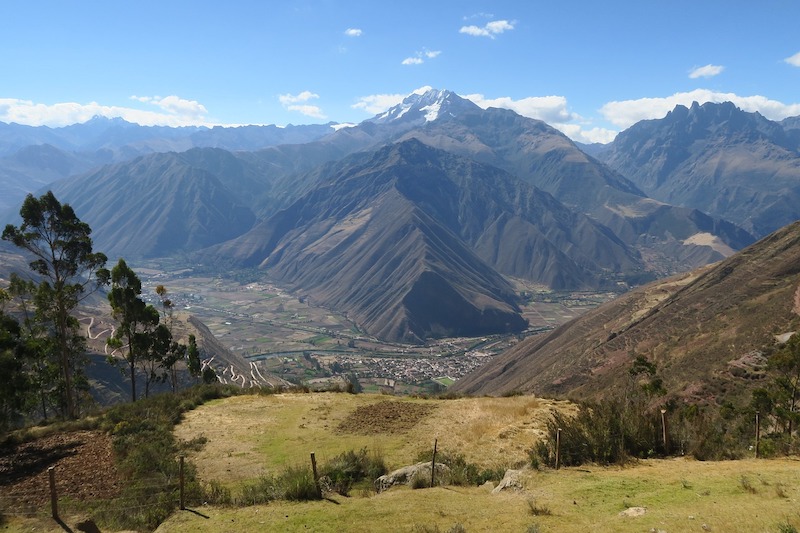
✅ Scenic Beauty
The valley is blessed with stunning natural beauty, including dramatic mountains, lush greenery, and the meandering Urubamba River. The picturesque landscapes make it a popular destination for travelers.
✅ Cultural Experiences
The region is home to indigenous communities that preserve traditional Peruvian customs and crafts. Visitors can explore local markets, watch weaving workshops, and discover the fascinating Quechua culture.
✅ Adventure Activities:
The valley offers opportunities for adventure enthusiasts, including hiking, zip-lining, and mountain biking.
✅ Gateway to Machu Picchu
The Sacred Valley is a key starting point for many travelers on their journey to Machu Picchu. The train to Machu Picchu departs from Ollantaytambo in the Sacred Valley, making it a convenient hub for those visiting the famous World Heritage Site.
Other cool things to do in Cusco to get used to the altitude
There are tons of incredible things you can enjoy in Cusco while you are getting used to the city’s elevation. Here are some of them:
✅ Explore the Historic Center
Cusco’s historic center is a UNESCO World Heritage Site, and is home to well-preserved colonial architecture and Inca ruins. Wander through its charming streets and visit landmarks like the Plaza de Armas, the Cathedral of Santo Domingo, and the Coricancha (Temple of the Sun).
✅ Visit Sacsayhuaman
This Inca fortress, located just outside of Cusco, features massive stone walls and impressive architecture. It offers great views of the city and is an excellent place to learn about Inca history.
✅ Visit the San Pedro Market
This bustling market is a great place to experience local culture and sample Peruvian street food. You can also find handmade crafts, textiles, and souvenirs here.
✅ Explore Museums
Cusco has several museums that provide insights into Inca culture and Peruvian history. The Museo Inka, Museo de Arte Precolombino, and Casa Concha are worth visiting.
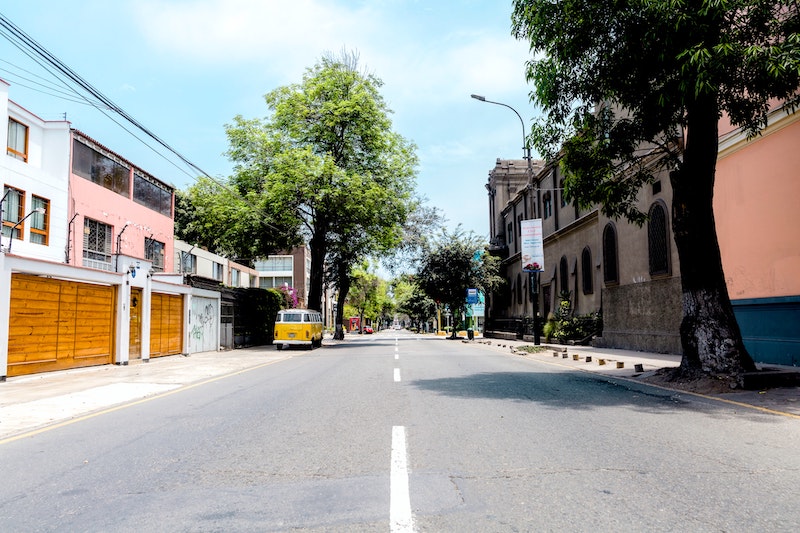
Flying from Lima to Cusco altitude sickness
Most visitors come to Cusco from Lima, the capital of Peru with a relatively low altitude. There’s a significant difference in altitude between Lima and Cusco, so you should take some time to get used to the altitude after arriving in Cusco.
Lima has connections to many countries in Latin America, Europe, and the United States. You can catch one of the daily flights from Lima to Cusco with Latam Airlines. Check ticket prices.
Lima Altitude
Lima has an average altitude of 154 meters (505 feet) above sea level. While it is a coastal city with a relatively low altitude, the surrounding areas can have higher elevations, especially as you move inland towards the Andes.
The city’s low altitude and location along the Pacific Coastline contribute to its mild and temperate climate. However, if you plan to travel to higher-altitude destinations in Peru, such as Cusco or Arequipa, you should be aware of the potential for altitude-related issues and take time to acclimatize properly.
Lima Altitude sickness
Altitude sickness is not typically a concern in Lima due to its low altitude. However, it can become an issue in Peru’s high-altitude regions, such as Cusco and the Andes Mountains. Lima’s coastal location and low elevation make it a perfect place to spend a few days before traveling to higher-altitude destinations in Peru.
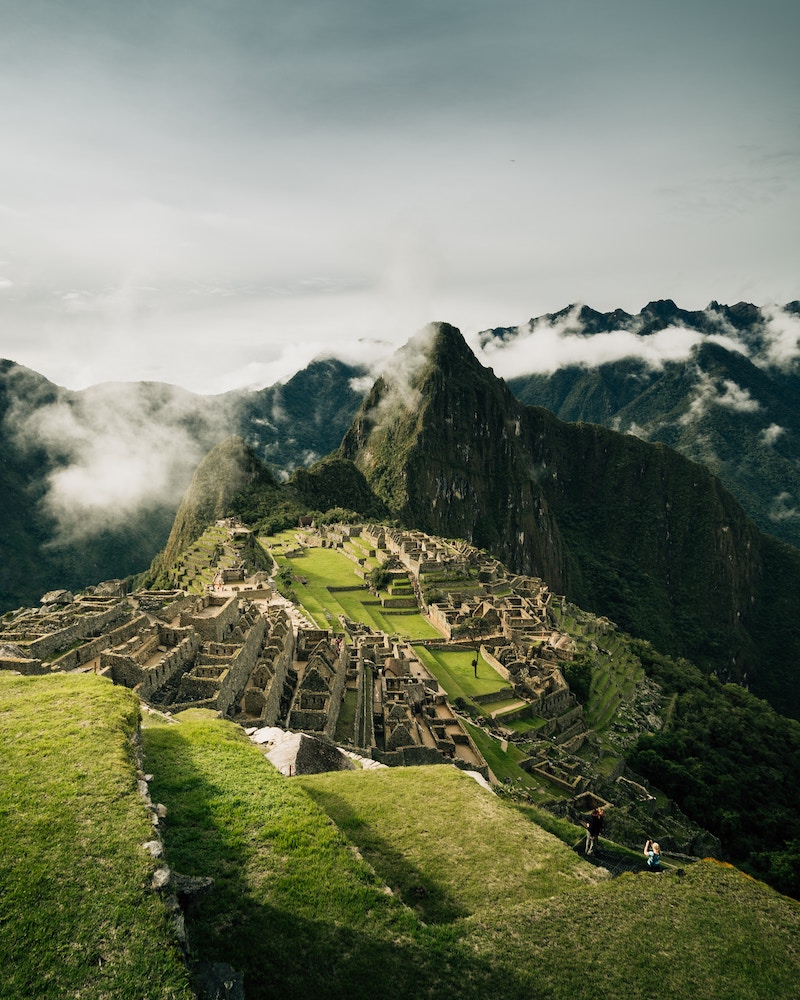
Machu Picchu altitude sickness
Most tourists come to Peru because of Machu Picchu. And while altitude sickness is generally not a concern in Machu Picchu, since it’s lower by altitude than Cusco, it’s best to take precautions before your visit.
How high is Machu Picchu?
Machu Picchu is located at an altitude of approximately 2,430 meters (7,970 feet) above sea level, which is lower than Cusco, which means you are less likely to have symptoms of altitude sickness when visiting this place. Still, you might experience some symptoms of altitude sickness, especially if you don’t take time to acclimatize after arriving in Cusco.
Things to do in Cusco besides Machu Picchu:
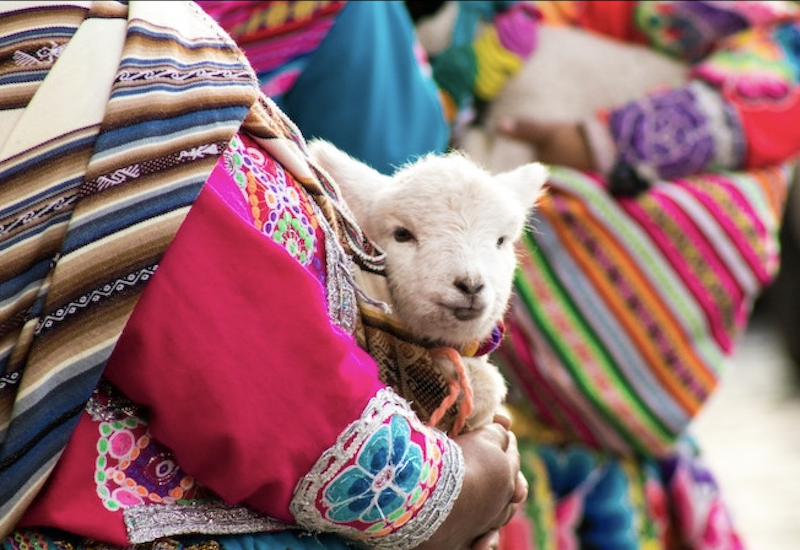
➡️ Cultural Experiences
Cusco is known for its vibrant cultural scene. You can visit indigenous markets, attend traditional festivals, and witness local customs and traditions. (Mention summer festival)
➡️ Adventure Activities
Cusco offers a range of adventure activities, including hiking, trekking, white-water rafting, and mountain biking, making it a hub for outdoor enthusiasts.
➡️ Local Cuisine
Peruvian cuisine is renowned, and Cusco is no exception. Check out one of the best restaurants in Cusco (vegan examples)
➡️ Art and Handicrafts
Cusco is known for its art and handicrafts, including textiles, ceramics, and jewelry. You can shop for unique souvenirs and witness local artisans at work. (Mention markets in Cusco)
➡️ Spanish Language and Culture
If you’re interested in learning or improving your Spanish, Cusco offers language schools and other opportunities for learning the new language.
Best day trips from Peru
After exploring the rich culture and history of Cusco, you should venture out and explore some of the best hikes near the city. Salkantay trek, Inca Trail, and Rainbow Mountain are popular choices, but since they are located at high altitudes, it’s crucial to spend a few days in Cusco before going there.
1. Inca Trail
The Inca Trail is a famous hiking route in Peru that leads to the ancient Inca city of Machu Picchu. The trail encompasses various terrains and altitudes as hikers make their way through the Andes Mountains.
The classic Inca Trail is approximately 26 miles (42 kilometers) long. Hikers typically complete the trek in 4 days, covering the trail’s various terrains and archaeological sites.
Inca trail elevation
The highest point on the Classic Inca Trail route, also known as the “Dead Woman’s Pass,” reaches an elevation of approximately 4,215 meters (13,829 feet) above sea level. This is the highest point on the trail and represents the most challenging part of the hike in terms of altitude.
Throughout the trail, there are fluctuations in elevation, with the starting point in the Sacred Valley near Ollantaytambo at approximately 2,800 meters (9,186 feet) above sea level. The trail then ascends and descends through various microclimates and terrains, offering breathtaking views and the opportunity to explore the unique ecosystems of the Andes.
Inca trail map
Facts about the Inca Trail
The Inca Trail is a famous hiking route in Peru that leads to the ancient Inca city of Machu Picchu. Here are some interesting facts about the Inca Trail:
Historical significance
The Inca Trail was a key part of the extensive network of roads built by the Inca Empire, connecting various regions of their vast empire. It served both as a transportation route and a pilgrimage path.
Starting point
The traditional starting point of the Inca Trail is in the town of Ollantaytambo in the Sacred Valley of the Incas. The trail culminates at the magnificent Machu Picchu.
Permits
To manage the impact of tourism and protect the trail, a limited number of permits are issued daily for hikers. It’s essential to secure a permit in advance, and they can sell out months in advance.
Inca ruins
Along the trail, hikers encounter numerous Inca archaeological sites, such as Wiñay Wayna, Sayacmarca, and Phuyupatamarca. These sites offer a glimpse into the ancient Inca civilization.
Inti Punku
Inti Punku, or the Sun Gate, is where many hikers first catch their breathtaking view of Machu Picchu, perched on a mountain ridge. It’s a memorable moment at the end of the trek.
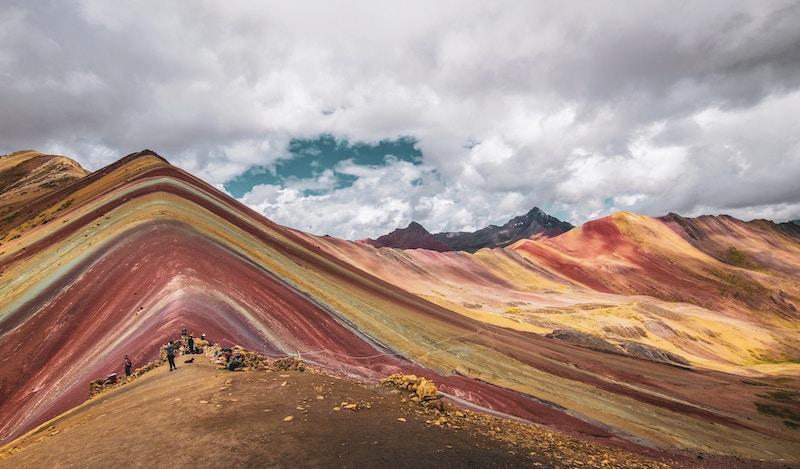
2. Rainbow Mountain
During my first trip to Cusco, I made a huge mistake and went on a guided tour of Rainbow Mountain the next morning after I arrived. Although I was able to finish the hike and enjoy the incredible views, I ended up with a terrible headache when we got down which kinda ruined the rest of my afternoon.
Don’t make my mistake, and take your time to get used to the high altitude in Cusco before taking a tour of Rainbow Mountain.
Rainbow Mountain altitude
Rainbow Mountain (also known as Vinicunca or Montaña de Siete Colores) is at a high altitude in the Andes Mountains, and the peak elevation of Rainbow Mountain is approximately 5,200 meters (around 17,060 feet) above sea level.
It is a popular tourist destination in Peru, known for its stunning multicolored geological formations.
Because of the high elevation, you are more likely to experience altitude at Rainbow Mountain than at any other popular place near Cusco.
How to avoid Rainbow Mountain altitude sickness?
To reduce the risk of altitude sickness when visiting Rainbow Mountain, consider the following tips:
- Acclimatize: Spend a few days at lower altitudes (e.g., Cusco or the Sacred Valley) to acclimate to the high elevation before attempting to visit Rainbow Mountain.
- Hydrate: Drink plenty of water to stay well-hydrated, as high altitude can lead to increased fluid loss.
- Take it slow: Avoid rapid ascents and give your body time to adjust to the higher elevation. It’s a tough hike, and you should do it in small increments rather than try to get to the top as fast as you can – something I wish I had known before doing this hike.
- Drink some cocoa tea – Besides chewing on cocoa leaves, you can also get some cocoa tea, which is great for fighting altitude sickness. You can get cocoa tea along the hike when you arrive as many local vendors sell it to tourists.
- Listen to your body: If you start to experience severe symptoms of altitude sickness, it’s important to pause the hike and descend to a lower altitude as quickly as possible, if your symptoms persist.
3. Salkantay trek
Hiking the Salkantay trek was one of the highlights of my trip to Peru, and I can’t recommend this adventure enough. Many tour companies in Cusco offer this tour, but I did my adventure with Salkatay Trekking, and had the best time of my life!
Salkantay trek altitude
The Salkantay Trek is another popular trekking route in Peru, leading to Machu Picchu. The highest point on the Salkantay Trek is the Salkantay Pass (Abra Salkantay), which reaches an elevation of approximately 4,630 meters (15,190 feet) above sea level. This pass is the highest point of the trek and is known for its stunning views of snow-capped mountains and the surrounding landscape.
I highly recommend this company, and they are super easy to find, as they are located just a block from the main square, but you can also book your tour online, which will save you a lot of time.
Here are some of the top reasons why I loved the Salkantay trek:
- The Salkantay Trek covers a range of altitudes as hikers progress through different ecosystems, including high mountain passes, cloud forests, and lush valleys.
- While the Salkantay Trek is considered a challenging alternative to the Classic Inca Trail, it offers a unique and breathtaking adventure for those seeking a less crowded route to Machu Picchu. As with any high-altitude trek in the Andes, acclimatization and proper preparation are key to a safe and enjoyable experience.
Cusco altitude sickness: FAQ’s
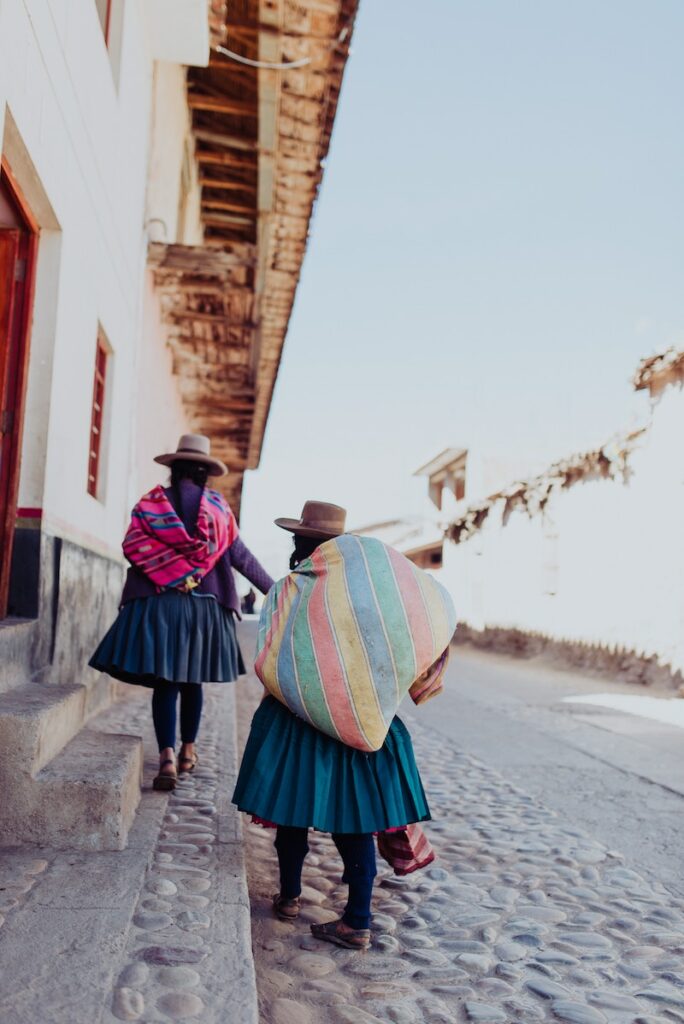
How to get used to elevation in Cusco?
Cusco, a city in southeastern Peru, is situated at a much higher altitude than Lima. To mitigate the effects of high elevation, acclimatize gradually, stay hydrated, and avoid strenuous physical activity in the first few days after arriving in Cusco. This will help your body adjust to the reduced oxygen levels at higher elevations and reduce the risk of altitude-related health issues.
What’s the highest mountain in Peru?
The highest mountain in Peru is Huascarán, part of the Cordillera Blanca mountain range. It has two main peaks, Huascarán Norte and Huascarán Sur, with Huascarán Sur being the highest point. Huascarán Sur’s elevation is approximately 6,768 meters (22,205 feet) above sea level, making it the highest mountain in Peru and one of the tallest peaks in South America.
Inca Trail vs Salkantay
While both the Inca Trail and Salkantay lead to Machu Picchu, these two hikes offer different experiences. The Inca Trail is one of the most famous trekking routes in the world. The trail has a limited number of permits each day, and they often sell out months in advance.
Due to its popularity, the Inca Trail can be crowded, especially during the high season. The Salkantay Trek offers a more diverse landscape, including high mountain passes, lush rainforests, and close encounters with the Salkantay Glacier.
The Salkantay Trek does not have the same permit restrictions as the Inca Trail, making it a more flexible option for those who plan their trips at shorter notice. While it’s still popular, the Salkantay Trek tends to be less crowded than the Inca Trail, offering a quieter and more remote experience.
Cusco altitude sickness: final word
The high altitude in Cusco can affect visitors in various ways, as it’s at a high elevation. If you are coming to Cusco from a place at sea level, you might experience a condition known as altitude sickness (or acute mountain sickness), which can have a range of symptoms from light headaches to swollen hands to increased heart rate. Always listen to your body and take time to get used to the altitude in Cusco before continuing your journey to the mountains.
